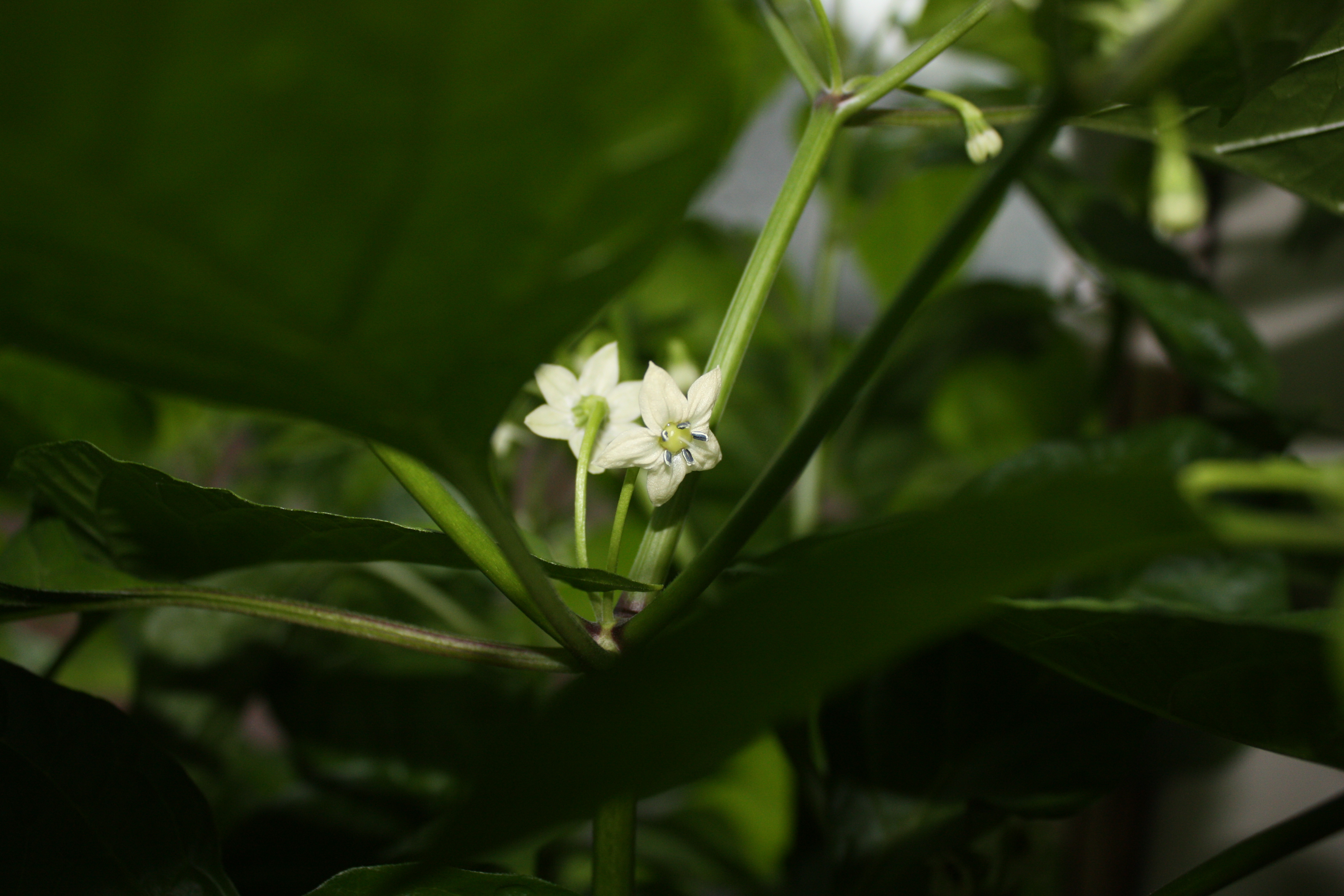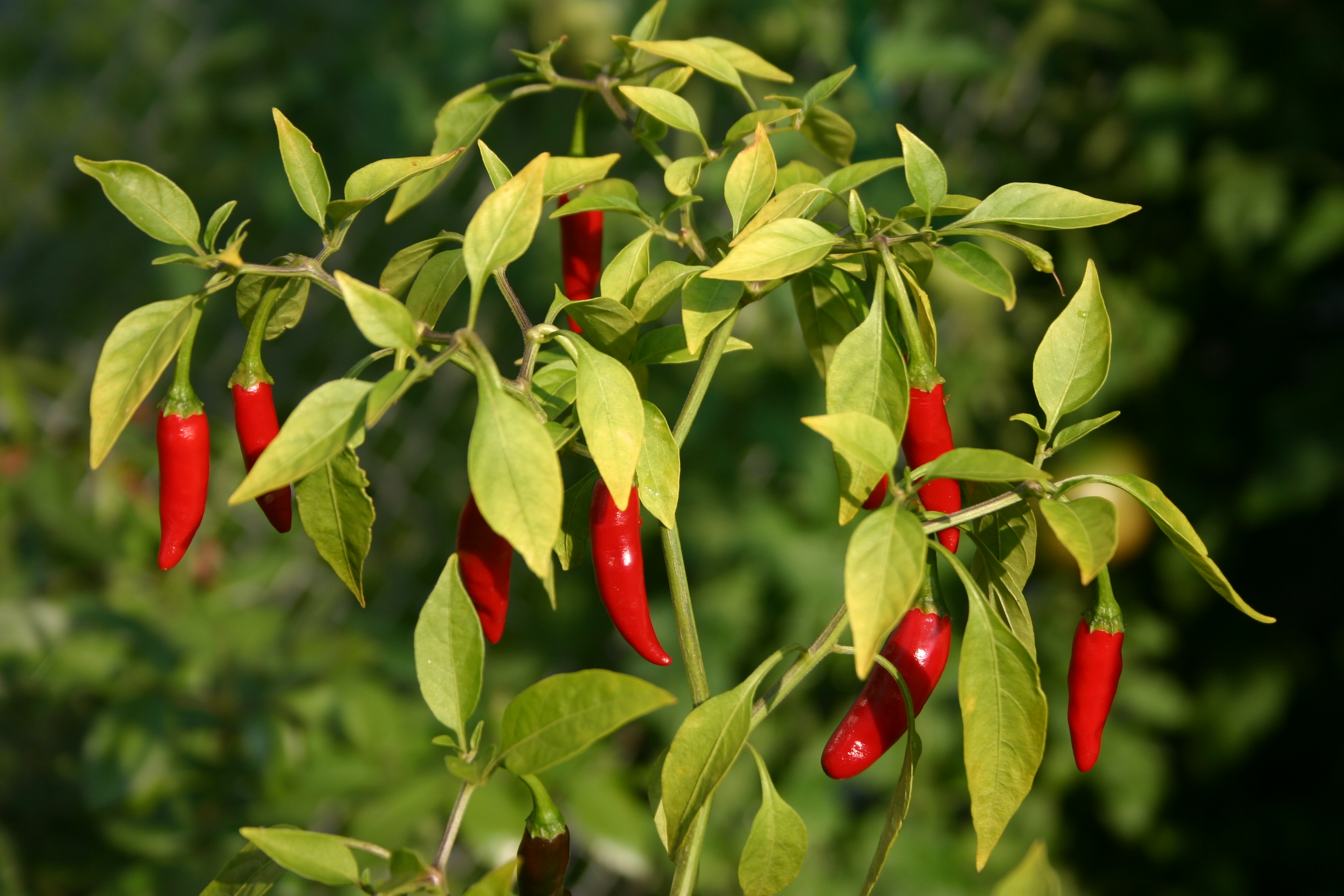|
Hainan Yellow Lantern Chili
The Hainan yellow lantern chili (), also known as the yellow emperor chili () is a member of the '' Capsicum chinense'' species of chili peppers that grows mainly in the southwest and southeast of Hainan Island off the coast of Southern China South China () is a geographical and cultural region that covers the southernmost part of China. Its precise meaning varies with context. A notable feature of South China in comparison to the rest of China is that most of its citizens are not n .... Description and use This hot chili matures to a bright yellow colour and is about long and wide. Most Hainan yellow lantern chili is processed into hot sauce. Cultivars In 2009, the Tropical Vegetable Research Centre of the Chinese Tropical Agriculture Institute announced the breeding of a new cultivar that produces 10 times more fruit than the original variety. (in Chinese) This has increased output from to per Chinese acre (mu). References External links * {{Capsicum Cultivars ... [...More Info...] [...Related Items...] OR: [Wikipedia] [Google] [Baidu] |
Capsicum Chinense
''Capsicum chinense'', commonly known as a "habanero-type pepper", is a species of chili pepper native to the Americas. ''C. chinense'' varieties are well known for their unique flavors and many have exceptional heat. The hottest peppers in the world are members of this species, with Scoville Heat Unit scores of over 2 million. Some taxonomists consider them to be part of the species '' C. annuum,'' and they are a member of the ''C. annuum'' complex; however, ''C. chinense'' and ''C. annuum'' pepper plants can sometimes be distinguished by the number of flowers or fruit per node – two to five for ''C. chinense'' and one for ''C. annuum'' – though this method is not always correct. The two species can also hybridize and generate inter-specific hybrids. It is believed that '' C. frutescens'' is the ancestor to the ''C. chinense'' species. Taxonomy The scientific species name ''C. chinense or C. sinensis'' ("Chinese capsicum") is a misnomer. All ''Capsicum'' species originated ... [...More Info...] [...Related Items...] OR: [Wikipedia] [Google] [Baidu] |
Chili Peppers
Chili peppers (also chile, chile pepper, chilli pepper, or chilli), from Nahuatl '' chīlli'' (), are varieties of the berry-fruit of plants from the genus ''Capsicum'', which are members of the nightshade family Solanaceae, cultivated for their pungency. Chili peppers are widely used in many cuisines as a spice to add "heat" to dishes. Capsaicin and related compounds known as capsaicinoids are the substances giving chili peppers their intensity when ingested or applied topically. While ''chili peppers'' are (to varying degrees) pungent or "spicy", there are other varieties of capsicum such as bell peppers (UK: peppers) which generally provide additional sweetness and flavor to a meal rather than “heat.” Chili peppers are believed to have originated somewhere in Central or South America. and were first cultivated in Mexico. After the Columbian Exchange, many cultivars of chili pepper spread around the world, used for both food and traditional medicine. This led to a ... [...More Info...] [...Related Items...] OR: [Wikipedia] [Google] [Baidu] |
Hainan
Hainan (, ; ) is the smallest and southernmost province of the People's Republic of China (PRC), consisting of various islands in the South China Sea. , the largest and most populous island in China,The island of Taiwan, which is slightly larger, is claimed but not controlled by the PRC. It is instead controlled by the Republic of China, a ''de facto'' separate country. makes up the vast majority (97%) of the province. The name means "south of the sea", reflecting the island's position south of the Qiongzhou Strait, which separates it from Leizhou Peninsula. The province has a land area of , of which Hainan the island is and the rest is over 200 islands scattered across three archipelagos: Zhongsha, Xisha and Nansha. It was part of Guangdong from 1950–88, after which it resumed as a top-tier entity and almost immediately made the largest Special Economic Zone by Deng Xiaoping as part of the then-ongoing Chinese economic reform program. Indigenous peoples like th ... [...More Info...] [...Related Items...] OR: [Wikipedia] [Google] [Baidu] |
Southern China
South China () is a geographical and cultural region that covers the southernmost part of China. Its precise meaning varies with context. A notable feature of South China in comparison to the rest of China is that most of its citizens are not native speakers of Standard Chinese. Cantonese is the most common language in the region while the Guangxi region contains the largest concentration of China's ethnic minorities, each with their own language. Administrative divisions Cities with urban area over one million in population Provincial capitals in bold. Namesake * South China tiger (southern China) * ''South China Morning Post'' (Hong Kong, South China) * Huanan Seafood Wholesale Market (Wuhan, Central China) See also * Lingnan * List of regions of China ** Southern China *** South Central China South Central China, South-Central China or Central-South China ( zh, c = 中南, p = Zhōngnán, l = Central-South), is a region of the People's Republic of China defi ... [...More Info...] [...Related Items...] OR: [Wikipedia] [Google] [Baidu] |
Xinhua
Xinhua News Agency (English pronunciation: )J. C. Wells: Longman Pronunciation Dictionary, 3rd ed., for both British and American English, or New China News Agency, is the official state news agency of the People's Republic of China. Xinhua is a ministry-level institution subordinate to the State Council and is the highest ranking state media organ in China. Xinhua is a publisher as well as a news agency. Xinhua publishes in multiple languages and is a channel for the distribution of information related to the Chinese government and the ruling Chinese Communist Party (CCP). Its headquarters in Beijing are located close to the central government's headquarters at Zhongnanhai. Xinhua tailors its pro-Chinese government message to the nuances of each audience. Xinhua has faced criticism for spreading propaganda and disinformation and for criticizing people, groups, or movements critical of the Chinese government and its policies. History The predecessor to Xinhua was the R ... [...More Info...] [...Related Items...] OR: [Wikipedia] [Google] [Baidu] |
Hainan Yellow Lantern Chili Plants - 02
Hainan (, ; ) is the smallest and southernmost province of the People's Republic of China (PRC), consisting of various islands in the South China Sea. , the largest and most populous island in China,The island of Taiwan, which is slightly larger, is claimed but not controlled by the PRC. It is instead controlled by the Republic of China, a ''de facto'' separate country. makes up the vast majority (97%) of the province. The name means "south of the sea", reflecting the island's position south of the Qiongzhou Strait, which separates it from Leizhou Peninsula. The province has a land area of , of which Hainan the island is and the rest is over 200 islands scattered across three archipelagos: Zhongsha, Xisha and Nansha. It was part of Guangdong from 1950–88, after which it resumed as a top-tier entity and almost immediately made the largest Special Economic Zone by Deng Xiaoping as part of the then-ongoing Chinese economic reform program. Indigenous peoples like t ... [...More Info...] [...Related Items...] OR: [Wikipedia] [Google] [Baidu] |
Chinese Units Of Measurement
Chinese units of measurement, known in Chinese as the ''shìzhì'' ("market system"), are the traditional units of measurement of the Han Chinese. Although Chinese numerals have been decimal (base-10) since the Shang dynasty, Shang, several Chinese measures use hexadecimal (base-16). Local applications have varied, but the Chinese dynasties usually proclaimed standard measurements and recorded their predecessor's systems in Chinese dynastic histories, their histories. In the present day, the People's Republic of China maintains some customary units based upon the market units but standardized to round values in the metric system, for example the common ''jin'' or catty (unit), catty of exactly 500gram (unit), g. The Chinese name for most metric units is based on that of the closest traditional unit; when confusion might arise, the word "market" (, ''shì'') is used to specify the traditional unit and "common" or "public" (, ''gōng'') is used for the metric value. Taiwan, like Ko ... [...More Info...] [...Related Items...] OR: [Wikipedia] [Google] [Baidu] |
Chili Peppers
Chili peppers (also chile, chile pepper, chilli pepper, or chilli), from Nahuatl '' chīlli'' (), are varieties of the berry-fruit of plants from the genus ''Capsicum'', which are members of the nightshade family Solanaceae, cultivated for their pungency. Chili peppers are widely used in many cuisines as a spice to add "heat" to dishes. Capsaicin and related compounds known as capsaicinoids are the substances giving chili peppers their intensity when ingested or applied topically. While ''chili peppers'' are (to varying degrees) pungent or "spicy", there are other varieties of capsicum such as bell peppers (UK: peppers) which generally provide additional sweetness and flavor to a meal rather than “heat.” Chili peppers are believed to have originated somewhere in Central or South America. and were first cultivated in Mexico. After the Columbian Exchange, many cultivars of chili pepper spread around the world, used for both food and traditional medicine. This led to a ... [...More Info...] [...Related Items...] OR: [Wikipedia] [Google] [Baidu] |
Flora Of China
The flora of China consists of a diverse range of plant species including over 39,000 vascular plants, 27,000 species of fungi and 3000 species of bryophytes.Wu, Z. Y., P. H. Raven & D. Y. Hong, eds. 2006. Flora of China. Vol. 22 (Poaceae). Science Press, Beijing, and Missouri Botanical Garden Press, St. Louis More than 30,000 plant species are native to China, representing nearly one-eighth of the world's total plant species, including thousands found nowhere else on Earth. China's land, extending over 9.6 million km, contains a variety of ecosystems and climates for plants to grow in. Some of the main climates include shores, tropical and subtropical forests, deserts, elevated plateaus and mountains. The events of the continental drift and early Paleozoic Caledonian movement also play a part in creating climatic and geographical diversity resulting in high levels of endemic vascular flora. These landscapes provide different ecosystems and climates for plants to grow in, creati ... [...More Info...] [...Related Items...] OR: [Wikipedia] [Google] [Baidu] |







